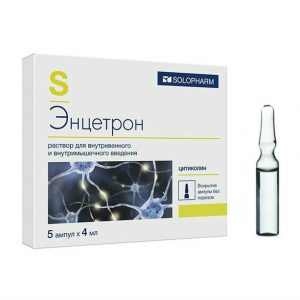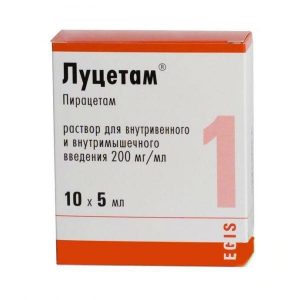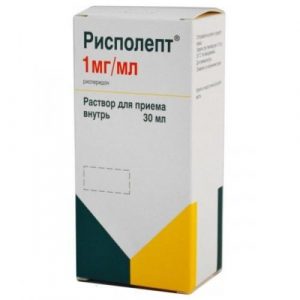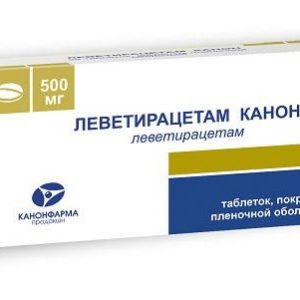Description
Latin name
Topsaver
Release form
Pills, film-coated white, round, biconvex, marked with MOT on one side and 25 on the other.
Packing
14 pcs – blisters (2) – packs of cardboard.
Indications
monotherapy of epilepsy in children from 7 years of age and adults (including in patients with newly diagnosed epilepsy)
adjuvant therapy in children of 3 years of age and adults with insufficient efficacy of first-choice PEP in partial or generalized tonic clonic seizures, as well as seizures against the background of Lennox-Gastaut syndrome.
Contraindications
children under 3 years of age
pregnancy
lactation (breastfeeding)
hypersensitivity to any of the components of the drug.
With caution, the drug should be prescribed for renal or hepatic insufficiency, nephrourolithiasis (including a history), hypercalciuria
Use in case of impaired liver function
Use with caution in case of liver failure.
In patients with impaired liver function, the clearance of topiramate is reduced.
Use in cases of impaired renal function
Use with caution in case of renal failure.
Patients with moderate or severe renal insufficiency may need 10-15 days to achieve equilibrium plasma concentrations, as opposed to 4-8 days for patients with normal renal function. As with all patients, a gradual increase in dose should be in accordance with clinical results (such as seizure control, side effects), given that patients with moderate or severe renal failure may take longer to achieve a stable state after each dose.
Use in children
Contraindicated in children under 3 years of age.
Use in children older than 3 years is possible according to the dosage regimen.
Use during pregnancy and lactation
The drug is contraindicated during pregnancy and during lactation (breastfeeding).
Composition
1 tab.
topiramate 25 mg
Excipients: lactose monohydrate – 23 mg, pregelatinized starch – 7.2 mg, partially pregelatinized starch – 0.8 mg, microcrystalline cellulose – 20.08 mg, sodium carboxymethyl starch – 2.4 mg, magnesium stearate – 0.8 mg.
Shell composition: hypromellose – 1.272 mg, polysorbate 80 – 0.06 mg, talc – 0.78 mg, titanium dioxide (E171) – 0.288 mg.
Dosage and administration
The drug is prescribed orally. The tablet is swallowed whole, without chewing, taken regardless of the meal. For optimal seizure control, it is recommended to start treatment with low doses, followed by an increase to the effective dose.
As part of the
combination therapy For adults, the minimum effective dose is 200 mg / day. The usual daily dose is 200-400 mg (in 2 divided doses). The maximum daily dose is 1.6 g. Treatment begins with 25-50 mg daily at night for 1 week. Then the dose is increased by 25-50 mg / day for 1-2 weeks, with a frequency of administration 2 times / day. If this dosage regimen is intolerant, the dose is increased by a smaller amount or at large intervals. The dose and frequency of administration are selected depending on the clinical effect.
For children over 3 years, the recommended daily dose is 5-9 mg / kg body weight, divided into 2 doses. Treatment begins with a dose of 25 mg at night for 1 week. Then the dose is increased by 1-3 mg / kg / day for 1-2 weeks, with a frequency of administration 2 times / day, until the optimal clinical effect is achieved.
Monotherapy
Adults begin treatment with 25 mg at night for 1 week. Then the dose is increased by 25-50 mg / day for 1-2 weeks, with a frequency of administration 2 times / day. If this dosage regimen is intolerant, the dose is increased by a smaller amount or taken at large intervals. The dose and frequency of administration are selected depending on the clinical effect. The recommended starting dose of topiramate for monotherapy in adults with newly established epilepsy is 100 mg / day, and the maximum recommended dose is 500 mg / day. These doses are recommended for all adults, including the elderly with normal renal function.
In children aged 7 years and older, treatment begins with a dose of 0.5-1 mg / kg body weight at night for 1 week. Then the dose is increased by 0.5-1 mg / kg / day for 1-2 weeks, the frequency of administration – 2 times / day. If this dosage regimen is intolerant, the dose is increased by a smaller amount or at large intervals. The dose and frequency of administration are selected depending on the clinical effect. The recommended dose range is 3-6 mg / kg body weight. Children with newly established partial seizures can be prescribed up to 500 mg / day.
Side effects
From the central nervous system: increased irritability, dizziness, headache, speech and vision disorders, psychomotor retardation, ataxia, fatigue, difficulty concentrating, confusion, paresthesia, drowsiness, thinking disorders, diplopia, anorexia, nystagmus, depression, taste perversion, agitation, cognitive disorders, emotional lability, apathy, psychotic symptoms , aggressive behavior, suicidal ideation or attempts additionally in children – personality disorders, increased salivation, hyperkinesia, hallucinations.
From the digestive system: dyspepsia, nausea, abdominal pain, diarrhea, dry lips, increased activity of hepatic transaminases, hepatitis, liver failure.
From the side of the organ of vision: the occurrence of myopia syndrome is possible against the background of an increase in intraocular pressure with an acute decrease in visual acuity and pain in the eye area. Myopia, a decrease in the depth of the anterior chamber of the eye, hyperemia of the mucous membrane of the eye and increased intraocular pressure, mydriasis. A possible mechanism of these disorders is an increase in supraciliary effusion, which leads to a forward displacement of the lens and iris and, as a consequence, the development of secondary angle-closure glaucoma.
Dermatological reactions: erythema multiforme, pemphigus, Stevens-Johnson syndrome and toxic epidermal necrolysis.
Other: weight loss, leukopenia, nephrolithiasis, oligohydrosis (mainly in children), metabolic acidosis.
Drug Interaction
Effect of Topiramate on Other PEPs
Does not affect the concentrations of carbamazepine, valproic acid, phenobarbital, primidone. In some cases, when used with phenytoin, it is possible to increase the concentration of phenytoin in plasma.
Effect of other PEPs on topiramate
When topiramate is co-administered with phenytoin and carbamazepine, plasma concentrations of topiramate may decrease. When adding or canceling phenytoin or carbamazepine, a dose adjustment of topiramate is recommended.
Cmax topopyramate in blood plasma is reduced when administered with other PEPs that induce liver enzymes.
Interaction with other drugs
When combined with topiramate, the AUC of digoxin is reduced by 12%.
Topiramate at a dose of 50-800 mg / day had no significant effect on the efficacy of norethindrone and at a dose of 50-200 mg / day on the effectiveness of ethinyl estradiol. A significant dose-dependent decrease in the efficacy of ethinylestradiol was observed with topiramate at a dose of 200-800 mg / day. Patients taking oral contraceptives, should inform the doctor of any changes in the nature of the bleeding.
When co-administered with topiramate, the mean Cmax and AUC of metformin are increased by 18% and 25%, respectively, whereas the mean total clearance decreases by 20%. Topiramate had no effect on TCmax of metformin. Plasma clearance of topiramate under the influence of metformin is reduced. The clinical relevance of the effects of metformin on the pharmacokinetics of topiramate is unclear. When prescribing or canceling topiramate on the background of metformin therapy, it is necessary to control the state of carbohydrate metabolism.
Increased Cmax by 27% and topiramate AUC by 29% when co-administered with hydrochlorothiazide.
Concomitant administration with ethanol topiramate and other CNS depressants is not recommended.
Pioglitazone AUC decreased by 15%, without modification of Cmax topiramate. For the active hydroxymetabolite of pioglitazone, a decrease of Cmax and AUC of 13% and 16%, respectively, was detected, and for the active ketometabolite a decrease of Cmax and AUC of 60% was detected. The clinical relevance of these data is unknown.
Topiramate, when used together with other drugs that predispose to nephrolithiasis, in particular with carbonic anhydrase inhibitors (acetazolamide), may increase the risk of nephrolithiasis. When using topiramate, patients should avoid taking these drugs because they can create physiological conditions that increase the risk of kidney stones.
Overdose
Symptoms: convulsions, impaired consciousness up to coma, decreased blood pressure, severe metabolic acidosis, increased severity of side effects.
Treatment: gastric lavage, activated carbon intake, symptomatic therapy, hemodialysis.
Storage conditions
The drug should be stored out of the reach of children at a temperature not exceeding 25 ° C.
The Expiration of
is 3 years.
Deystvuyuschee substances
Topyramat
dosage form
dosage form
tablets




